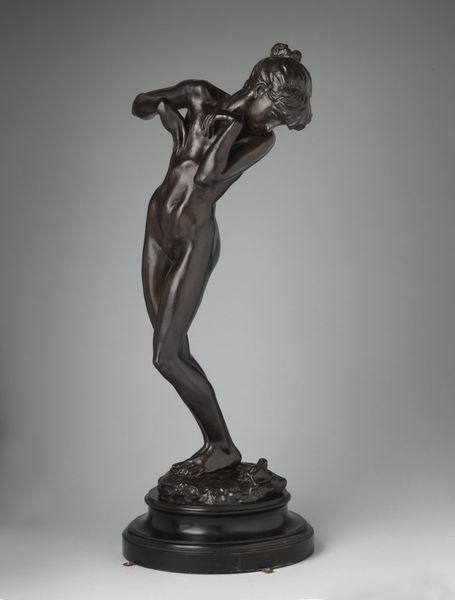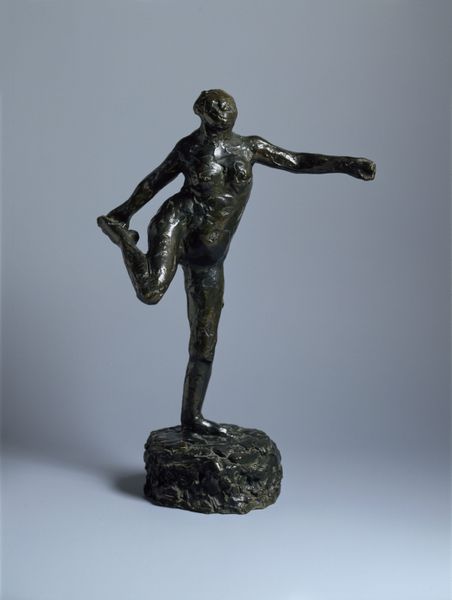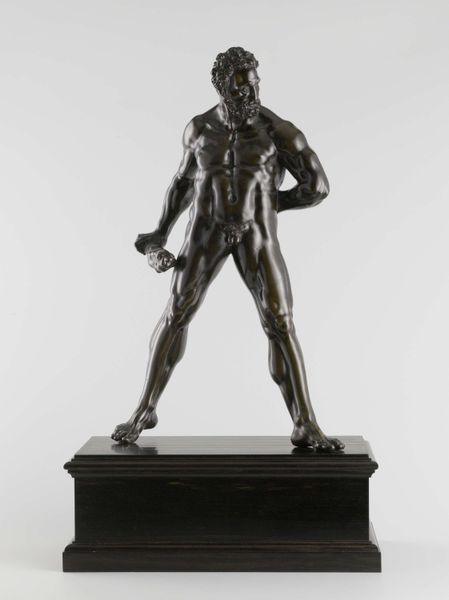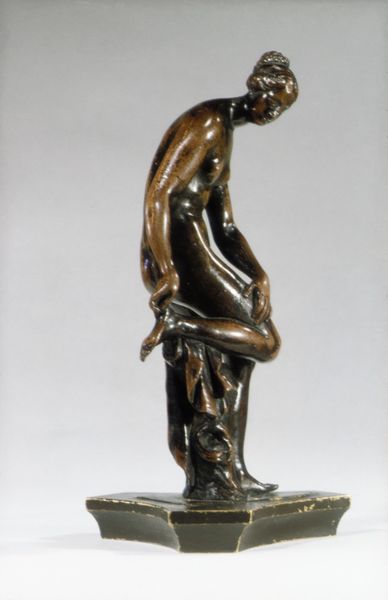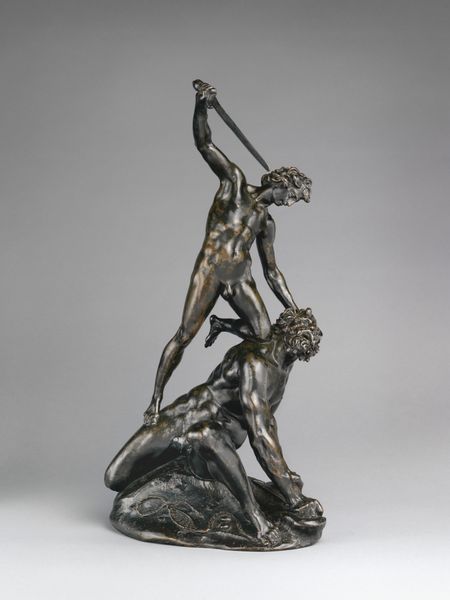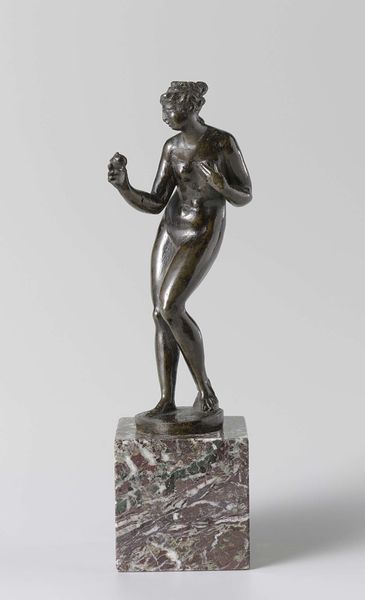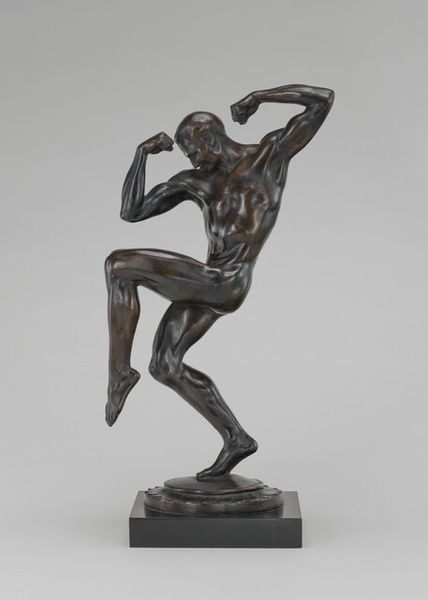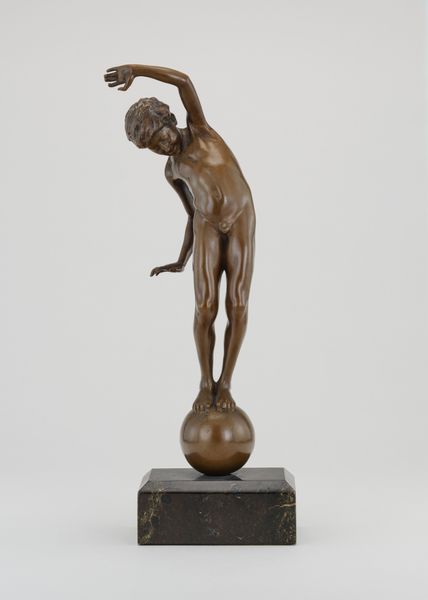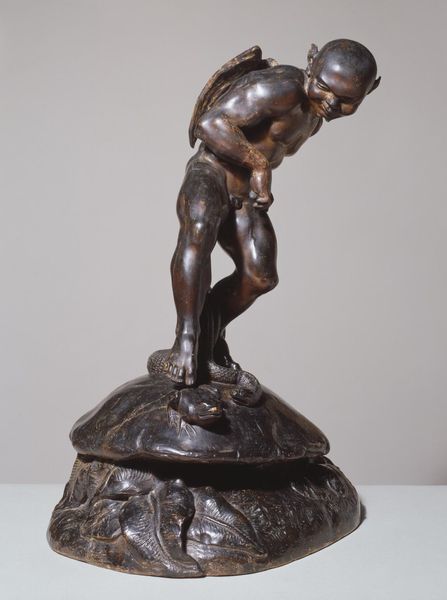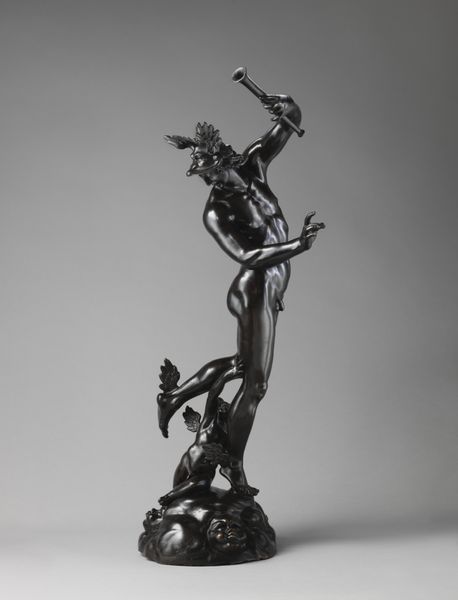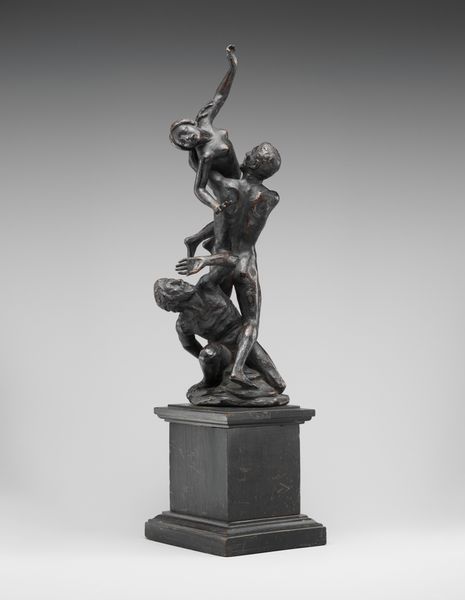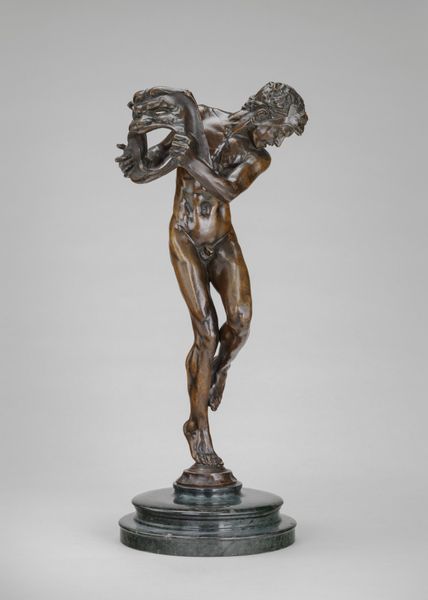
metal, bronze, sculpture
#
portrait
#
metal
#
sculpture
#
bronze
#
mannerism
#
figuration
#
11_renaissance
#
sculpture
#
history-painting
#
nude
Copyright: Rijks Museum: Open Domain
Curator: This bronze sculpture, known as "Cleopatra," dates back to the 16th century and is currently held in the Rijksmuseum's collection. It is attributed to Benvenuto Cellini and is a beautiful example of mannerist sculpture. Editor: My first impression is just, oh, wow, this is heartbreakingly tender, isn’t it? She’s leaning, defeated almost, by the weight of, well, everything. The cold bronze somehow amplifies that sense of vulnerability. Curator: Absolutely. The historical context is key here. Cleopatra's story, repeatedly depicted, has always intersected with politics of power and gender. We can see how Cellini positions Cleopatra at the moment of her suicide. A Roman subjugation of Egypt informs the narrative, but more so it tells a timeless tragedy in loss of female rule, a common fear that perpetuates today in various forms of social anxiety and even political events, globally. Editor: I feel like I am almost intruding by looking at her. Her face is hidden, bent forward so intensely. But also, what a way to go; powerful, almost beautiful, in a macabre way, to decide your own ending so decisively. Even in bronze she exudes a very human, immediate sense of control at this very final point. Curator: Her death represents a collapse of a dynasty and a personal defeat. Renaissance artists and their patrons are well versed in classic symbolism. But more than the history lesson or a dramatic cautionary tale, this Cellini work also speaks volumes about women in positions of leadership—and how easily power could be, and frequently continues to be, usurped. Editor: I think that's what I find so compelling here, you know? The mastery with which Cellini renders Cleopatra is, dare I say, sympathetic to Cleopatra’s demise as not a personal shortcoming, but a systemic challenge that faces women when navigating in masculine dominated leadership roles. The serpent feels not menacing, but like the only loyal friend she had left in her court of betrayers and Roman imperialists. Curator: Right, her suicide, therefore, shifts away from mere tragic drama into an act of defiance. When faced with utter defeat, taking destiny into her own hands becomes the ultimate form of self-expression and reclamation. I would add that what speaks loudest here is Cellini's craft of that moment. It reveals as much, if not more, of our present, by showing us what hasn’t changed, sadly, for millennia in social order. Editor: I can only agree! Viewing “Cleopatra” through that contemporary lens allows us, perhaps even forces us, to reckon with how perceptions of powerful women throughout history are shaped. This makes me look forward to continue visiting this museum again and again, reflecting and questioning those deep, complicated connections that weave our stories into those of ages long ago.
Comments
No comments
Be the first to comment and join the conversation on the ultimate creative platform.
